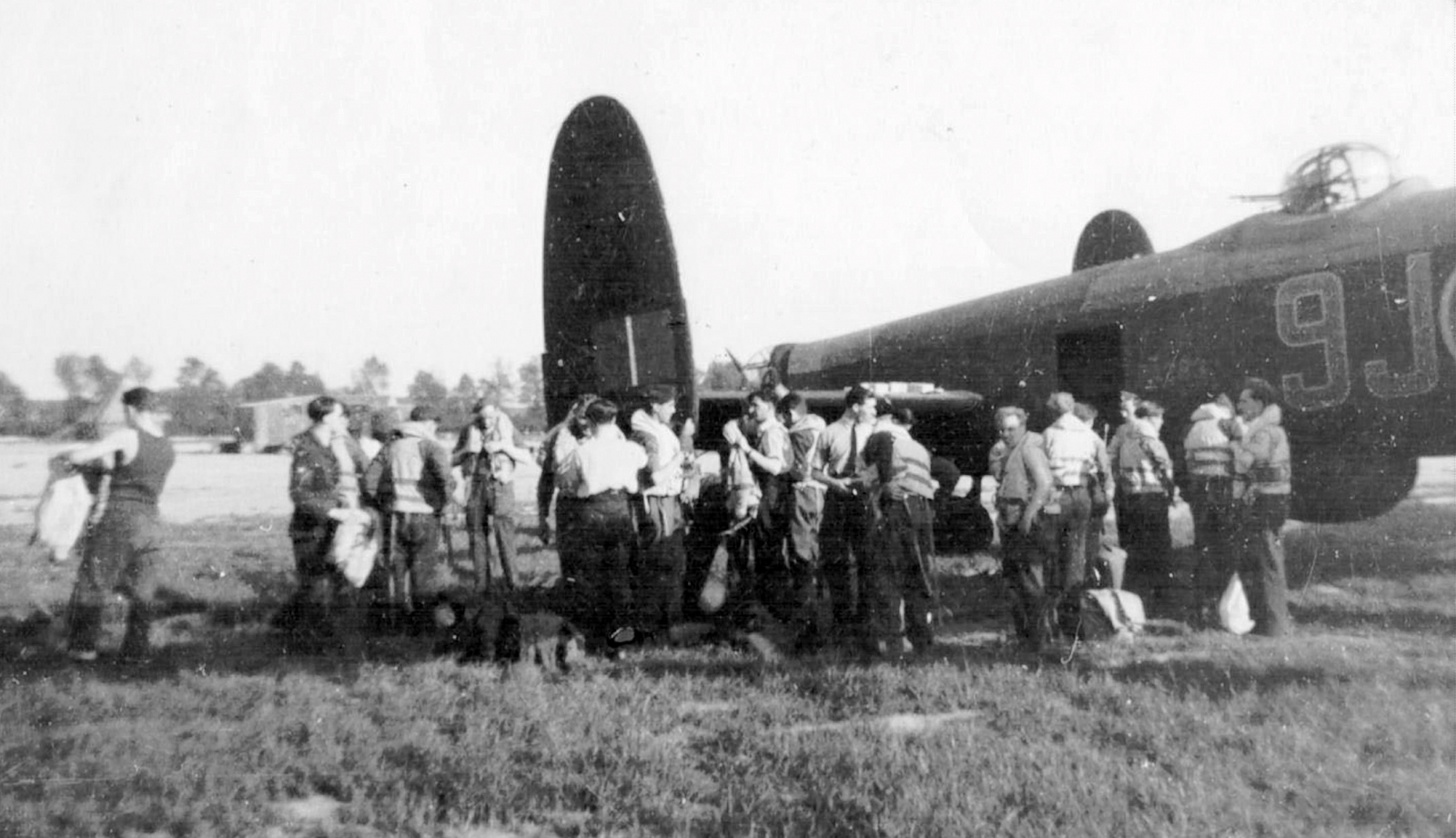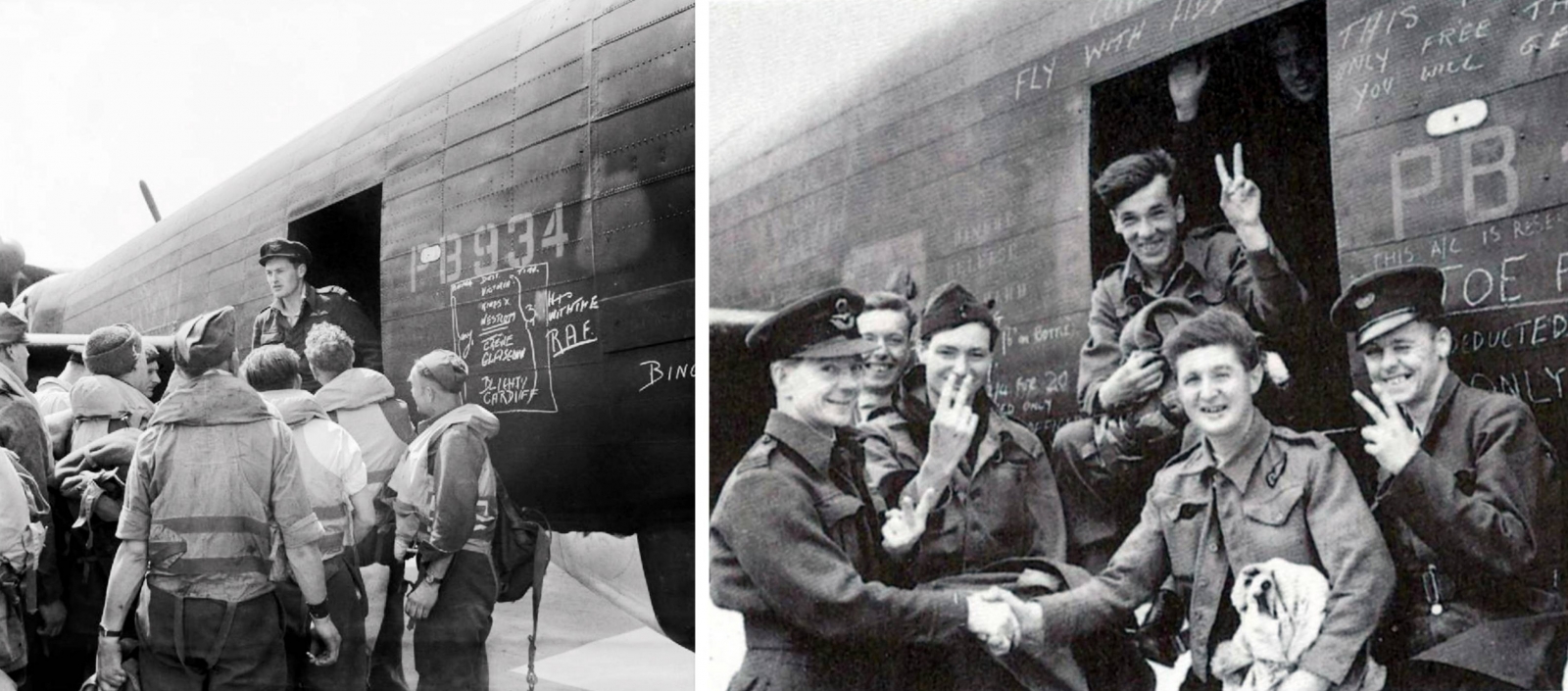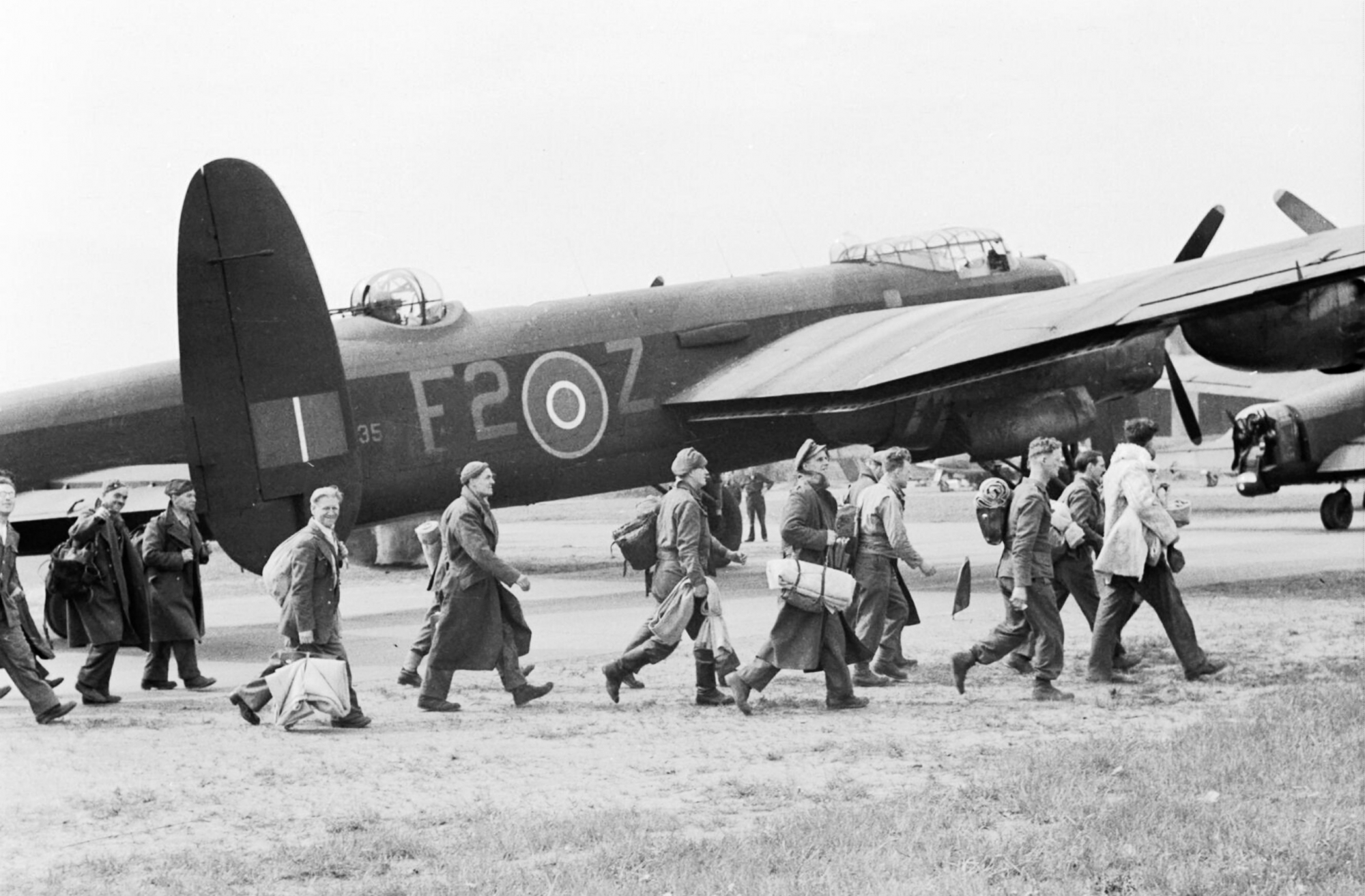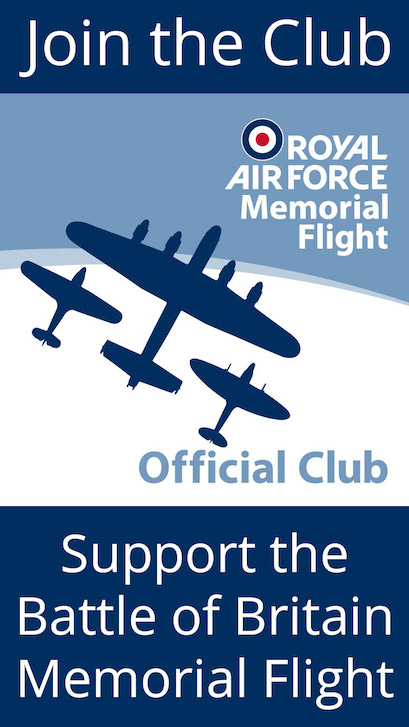Operation Exodus April and May 1945
Header image: Liberated Allied prisoners of war walk past Lancaster ‘F2-Z’ of 635 (Pathfinder) Sqn at Lubeck aerodrome, Germany, on 11th May 1945, to board a Lancaster for a flight home.
Eighty years ago, in April and May 1945, RAF Bomber Command became involved in an urgent humanitarian operation to repatriate thousands of recently released Allied prisoners of war from Europe to Britain. The Bomber Command operation ran from 3rd April to 31st May 1945 and was given a wholly appropriate code name, Operation Exodus.
By April 1945, after much of Europe had been liberated by Allied forces and the Germans were in headlong retreat, many Prisoner of War camps in occupied Europe had been liberated. In total there were more than 354,000 ex-prisoners in Europe, stranded hundreds of miles from their homes, many suffering from illness, fatigue and starvation. As they flooded into collection points throughout Europe, it was clear that a swift method of repatriation was urgently needed.
So, in addition to the RAF Transport aircraft already flying regular shuttle runs between the Continent and the UK, RAF bombers were tasked to fly the ex-PoWs home. By May 1945, 443 Lancasters, 103 Dakotas, 51 Halifaxes, 31 Liberators, three Stirlings, three Hudsons, and two Boeing B-17s were involved in the operation. Bomber Command flew over 3,500 sorties to collect ex-prisoners of war from overseas and bring them back home. At the height of the operation, the repatriation aircraft were arriving at a rate of 16 per hour bringing more than 1,000 people a day into British receiving camps. RAF Bomber Command eventually repatriated 74,195 former PoWs, well over half of the eventual total of 132,000 British and Commonwealth servicemen brought back to the UK by air.

With ex-prisoners spread across Europe, a handful of key collection airfields were identified at which the PoWs could be assembled prior to air repatriation. In Germany itself, Lübeck on the Baltic coast and Rheine near the Dutch border were both selected, while in Belgium, Melsbroek (today Brussels International Airport) also became a collection point. In France, Juvincourt near Reims and Lille in the northeast of the country completed the Continental airfields. In the UK a number of RAF reception airfields were set up, including Dunsfold, Ford, Methwold, Seighford, Westcott and Wing, as well as Oakley and Tangmere. At each of the reception airfields a hangar was assigned and equipped with all the staff and facilities necessary to receive and process thousands of former PoWs. The Red Cross played a significant role, as did many of the other war relief organisations.
The Lancasters involved in Operation Exodus usually flew with a crew of five, with the bomb aimer and one of the gunners left behind, and although the spartan confines of a Lancaster were less than ideal for carrying passengers, with the provision of blankest and cushions each aircraft carried up to 24 PoWs sitting on the floor above the bomb bay and in the rear fuselage.
Sadly, the operation was marred by several accidents, some of them involving fatalities; three ground crew, 18 aircrew and, particularly tragically, 25 former PoWs were killed, with 10 Lancasters being completely destroyed and another 18 damaged to varying degrees. It might have been hoped that with the war ending, a safe outcome and a return to home and family were finally within the grasp of all involved. However, an instance of incorrect loading, technical failures, bad weather, unsuitable runways in poor condition and also (regrettably) unauthorised low flying accidents, all played their part in the losses incurred.

For the Bomber Command aircrew involved in this humanitarian operation it was a moving experience. Lancaster pilot Warrant Officer ‘Bert’ Allam of 227 Squadron flew PoWs home from Melsbroek on 10th May 1945. He said, “The English coast appeared as a blur in the distance. As many as could crowded forward to catch the first sight of England. I looked at their faces as they peered out wide-eyed. What were they thinking, I wondered? Seeing once more the country they had left, long ago in many cases, for we had some veterans from Dunkirk and even earlier, and now they were returning at last to within reach of their families and homes. I glanced at some of the aircrew among them, a wireless operator from 4 Group, a navigator from our own 5 Group. What were they thinking? When they had last crossed this coast, they were on what was to be their last operational trip.”
One of the British former PoWs who returned to England in a Lancaster was RAF pilot Warrant Officer Percy Carruthers DFM. He remembered the reception at RAF Wing in Oxfordshire: “Lovely baths, new uniforms, haircuts, medical checks, lovely beds with actual sheets on them, beautiful food and as much as our shrunken stomachs could hold.” Then at the Cosford Reception Centre, “full medical, interrogation, more uniform, a few pounds in the pocket,” and then, “away home to my Cumbrian hills, the little village on the hillside, the little farm at the top of the bank and the folks with a lot of tears and a lot of smiles.”
LEST WE FORGET









